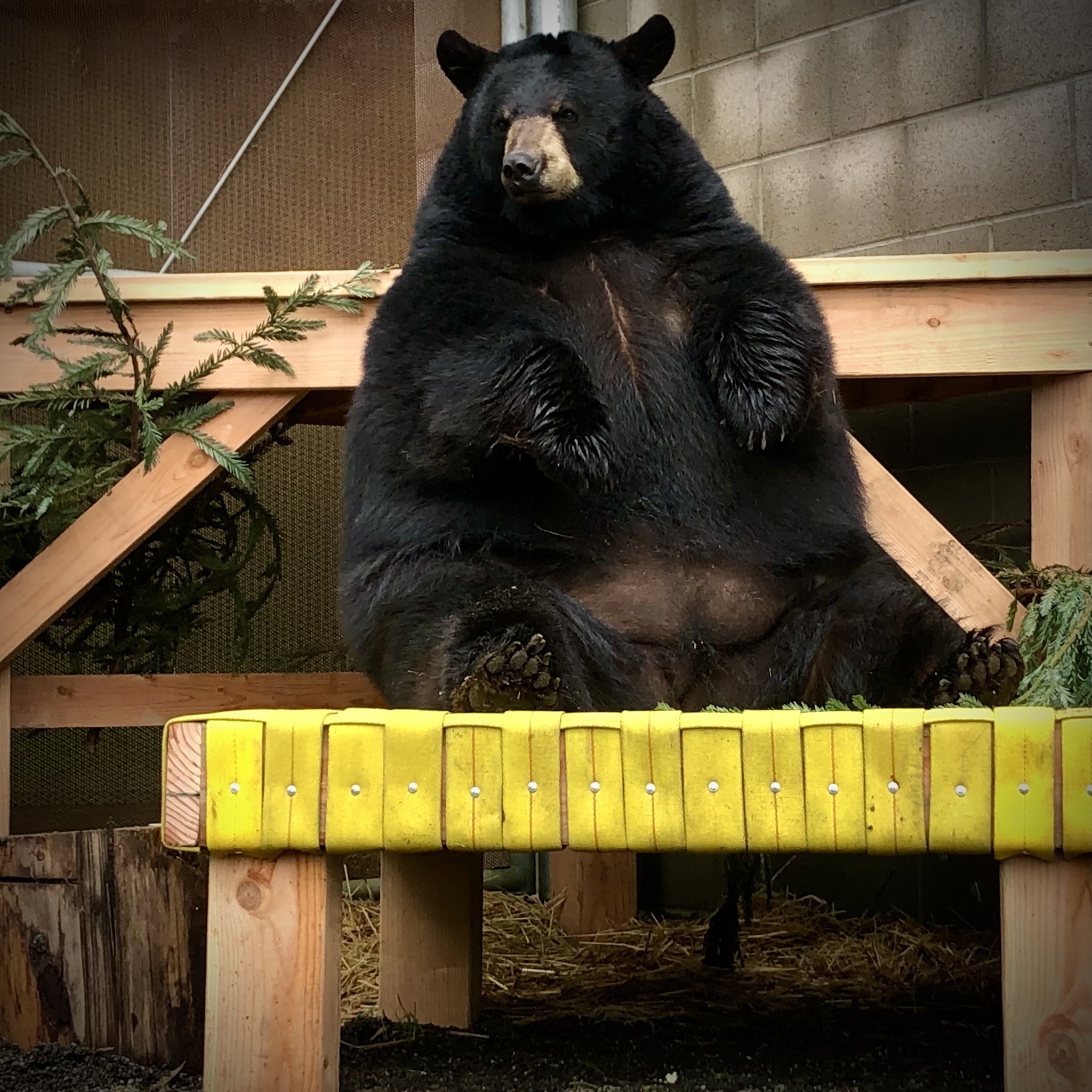- Introduction to Ishŭng and Her New Habitat at Sequoia Park Zoo
- The Importance of Training and Behavioral Enrichment for Captive Bears
- Detailed Description of Ishŭng’s Dietary Preferences and Enrichment Activities
- Insights into the California Department of Fish and Wildlife’s Role in Wildlife Management
- The Broader Implications of Non-Releasable Animals in Zoos for Conservation and Education
Ishŭng’s transition to the Sequoia Park Zoo marks an important chapter in her life and offers fascinating insights into the importance of proper zoo management and wildlife conservation. As an American black bear, Ishŭng embodies the adaptability and curiosity inherent in her species. Her journey from a facility unable to secure a renewed permit to a new home underscores both challenges and opportunities in wildlife rehabilitation and management.
American black bears, like Ishŭng, play an important role in the ecosystems they inhabit. They are adaptable omnivores with a diet that includes fruits, meat, and vegetation. This adaptability is mirrored in Ishŭng’s current fondness for lettuce, citrus, and beef. Such dietary preferences, while diverse, must also meet nutritional needs, balancing meat and plant sources to ensure her health. Her enjoyment of lounging on platforms and interacting with natural enrichment items such as sticks and logs highlights the importance of habitat diversity in keeping captive wildlife mentally and physically stimulated. Enrichment keeps animals engaged, supports their well-being, and reflects the dedication of animal care staff to providing environments that mirror natural surroundings.
Training is a vital element for managing wildlife in captivity. It assists in health assessments, encourages natural behaviors, and strengthens the bond between animals and caretakers. The first step in training often involves teaching animals to recognize their names. This recognition is foundational for further training goals, such as moving between areas and onto scales for routine weight checks. Such behaviors are essential to monitor their health without causing stress. As caretakers report on Ishŭng’s progress, they express optimism for future developments, underscoring the significance of taking small but purposeful steps in animal care routines.
The California Department of Fish and Wildlife (CDFW) plays a key role in wildlife management and conservation within the state. CDFW’s involvement in relocating Ishŭng highlights the complexities of ensuring wildlife welfare, coordinating with facilities that meet specific standards for care. When Ishŭng’s previous home could not renew its permit, CDFW facilitated her relocation, an example of proactive management to guarantee that animal welfare remains a priority. Such measures not only affect individual animals but are indicative of broader conservation principles and actions aimed at protecting wildlife species while educating the public.
Housing non-releasable animals such as Ishŭng in zoos is not just an aspect of animal management but also serves broader educational and conservation purposes. Zoos offer unique platforms where the public can learn about wildlife and conservation challenges directly. They can inspire future generations to advocate for wildlife protection and environmental stewardship. Moreover, zoos engage in research that contributes to conservation science, helping in the development of better care practices and understanding of various species. Ishŭng’s story of relocation and adjustment is more than an animal’s personal journey; it enriches our understanding of American black bears and highlights the constant need for effective wildlife management strategies.
Ishŭng’s arrival and adaptation to the Sequoia Park Zoo serve as both a learning opportunity and a testament to the dedication inherent in managing captive wildlife. Her preferences, behaviors, and the efforts involved in her training reveal much about the needs and characteristics of American black bears. This situation reflects larger themes in conservation, emphasizing the role of regulated wildlife management and education in promoting a sustainable future for both wildlife and humans.
*****
Source Description
Ishŭng update! 🐻 Animal care staff have been getting to know Ishŭng since her arrival, and they report that she is adjusting well to her new home at the Zoo. She has a fondness for lettuce, citrus, and beef and seems to enjoy lounging on the platform in her patio and interacting with sticks, logs, and other natural enrichment items.
One of the first training goals is teaching Ishŭng her name! Then she will learn other behaviors, like how to follow staff and move from one area to another. Foundation behaviors like these will make it easier for her to accomplish the next behavior goal: how to step on a scale for a weight check. Animal care staff are pleased with her progress & look forward to sharing more soon!
Ishŭng is a non-releasable three-year-old American black bear that came to the Sequoia Park Zoo in late March. The California Department of Fish and Wildlife sought placement for her after her previous facility was not approved by CDFW to renew their restricted species permits.


